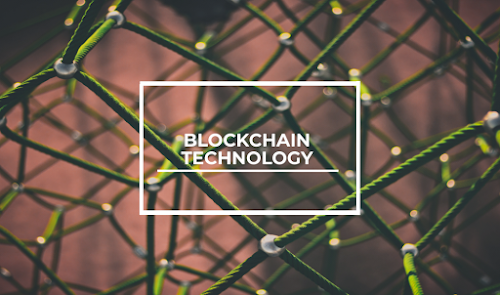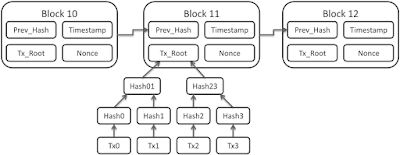Blockchain Technology: A layman's perspective
Initially, I was one of those people who knew little about this trending Blockchain technology. Then I came across a Bloomberg article about this, which made me dig deeper into it. This pandemic situation has made a lot of people sulk in their beds and do nothing productive. I guess, the best way to utilize this time is to learn about new things! So, here is my understanding of what it is.
Introduction
Nowadays, we’re bound by this world of technology. You tend to see a new technological improvement in the blink of a moment. One of this was made in 1991 by Stuart Haber and W. Scott Stornetta to prevent illegal interference in document timestamps. They made the use of blockchain, but a network so strong needed some great invention for its application and there was one of it, i.e. bitcoins. Bitcoins were invented by Satoshi Nakamoto in January 2009 as a digital currency, something which we are familiar of. Now what exactly is a blockchain, you may ask. It is basically a method of record keeping. To understand it better, let’s dive in.
Blockchain: How it works?
Lets try to understand it through an example, block is your information of any transaction that has happened and and chain is the book of transactions which keeps a record of it. Simple, isn’t it? We know that the Central Bank prints money for the functioning of the economy but what if the government is dishonest with its use of the money, it would simply mean that your money is in wrong hands or not being appropriately used. Blockchain on these lines has no third party ownership and is thus free of all such trust issues. We will delve further into the trust and security concern in the next paragraph. All these blocks contain pieces of information be it of transactions, of the location of the product when you’ve ordered something, secured cryptographically through a hash function. Each block is unique from each other, just the way none of the humans are alike (obviously not twins!) and in different bodies with different names like Ram or Gopal; similarly, every transaction has a unique code. Any attempt made to enter a transaction on this network, makes them run a program called ‘wallet’ which consists of a public and private key.
Every transaction is run through a hashing algorithm which is the input and is converted into an output of fixed length i.e. public key and private key lies only with some people and if you lose that, then you lose the access to your wallet. So, suppose you order a pair of headphones from Flipkart by entering into a transaction and you have just confirmed your payment. This transaction along with its details is verified by the network of computers that are part of the blockchain. Then, the transaction with its unique code is added to the block containing thousands of such transactions. One thing about this is that the transactions are added to the blocks serially thus, making it very simplified to track it. So a person looking into the transaction history will be able to see your transaction not with your personal details but with a unique code saying that, “ XY128378HFDSYJB paid 5 XBT (code for bitcoin)”. In such a way the information in blockchain is very transparent and up there for public, only with the digital signatures like these that are the public keys. Information in this sense is not anonymous but confidential which is mistaken by many.
What makes it secure?
 |
| Image courtesy: financemagnets.com |
Its also known as a ‘distributed ledger’, so a ledger for all those with non accounts background is a book that keeps records of all the credits and debits in the account. It is distributed because each computer becomes a part of the vast network of blockchain and an individual can also obtain a copy of the blockchain but cannot edit it (from hacker’s perspective). An attempt made by the hacker to edit any one block to make the cryptocurrency owner to twice make the payment for any purchase will cause him to change the public key of it which will change the details of that transaction used in other block and so on, thus causing an edit in so many blocks which is far from difficult to attain. Although, several hackers do make the attempt to add a block to the blockchain which is a process called ‘mining’ by using their complex computer algorithms in return to be rewarded with the bitcoin. This is the consensus model i.e. you prove your work for being a part of blockchain. Since the supply of bitcoins was limited to 21 million by its developers, the rate of reward for every mine keeps getting halved in every 3–4 years. Suppose, you’re a hacker and you just earned 10 bitcoins, but 4 years down the lane you will only get 5 bitcoins in return. And that’s how the supply of it is also limited. Now coming back to how it works, you can always get a copy of the blockchain if you’re a part of this network and it in turn makes sure that you receive all the additions made to the blockchain. In such a way, there will be tons of such copies of different transactions. And in order for everyone to trust this, the consensus protocol will form the longest chain which will be the one that majority of users trust, thus making it secure.
It is theoretically possible to hack into the system by the so called ‘majority rule’ i.e. if the hacker comes in control of more than 51% of the computers in the network of blockchain. This was once tried by a hacker group called ‘Bitfury’ who used their high performing computer networks to crack the algorithms of the blocks, in order to get more and more bitcoins which were worth $700 each at that time. They did this as bitcoins were in huge demand and their value was pretty high. But, they didn’t reach the 51% level as they managed to decide that they won’t be mining more than 40% of the network. This happened because people were selling the bitcoins off and due to this fear, it’s value was going down.
Some real world applications
When I said that it has no third party ownership, I meant that it is decentralized i.e. no mediator in between the transactions. Do you even know how beneficial it will be for the world if the institutions start adopting this technology? Let me explain through some real life examples.
- All of us pay for services of mobile applications like UrbanClap, Bigbasket, Zomato etc. which are flourishing these days for the facilities they provide us; these would have to change their business models in presence of this technology. This will happen just because of one simple reason, these transactions come at no cost and it would directly connect us to the service providers without the delivery fee or membership fee of such mediators.
- If adopted by the banking institutions, it can lead to all our NEFT transactions and various inter country transfers to be processed in just 10–15 minutes instead of taking hours or even days. Imagine how easy it will be to transfer sums of money on a Friday and not having to wait for the confirmation till Monday, thus avoiding the risk of the 2–3 days gap where the payment is stuck because of the bank timings. Although, this is already happening through mediums like Google Pay, Paytm and Phonepe. However, they charge for transactions made via credit cards and allow for free transfer only up to a certain limit of the amount, which will cease to exist.
- Similarly, the payments and delivery of stocks of various securities that take days to be transferred to our accounts would be securely delivered to the accounts with the ownership secured by this huge network of blockchain i.e. immutable. Immutability would mean that you could keep adding digital information to the chains in the form of blocks but not edit it.
- The information which is chargeable these days by websites such as Business Insider, Bloomberg would come at no cost and journalists will be able to launch their own online newsrooms with no funding by the government or corporates, thus leading to unfavored, honest arguments and reviews. This attempt was recently made by a company called CIVIL in Brooklyn, New York which attempted to support sustainable journalism by giving the journalists tokens that provided them the right to have a say in the company’s decision making and for publishing stories without the fear of them being falsified.
- The apps like Gaana, Spotify, Apple Music will not be able to claim their rights on the artist’s work and artists will be able to sell their covers directly to the audience through their own websites and claim all the amount of sales along with royalty.
- In similar lines, the KYC (Know Your Customer) process becomes very cumbersome involving many people in the process of collecting, verifying and storing data. If adopted, blockchain could save the costs of employing all these people by directly confirming the required information from the relevant authorities where each person in authority would add their confirmations to these blocks, thus securing it.
- Companies such as DOC.AI in Palo Alto, California are making the use of blockchain and machine learning for providing personal health insights and predictive analytics to the patients from their research.
- Supply Chain Network: As many of us are locked up in our apartments due to this Covid situation, we would want organically harvested fruits and vegetables. This problem can also be solved through blockchain where we can keep a track of all the products from their source to the destination.
- Websites like torrent are all part of the peer to peer network, where the the person who uploads various kinds of content is also the one who downloads. Such websites allow us to ignore the role of Amazon and Netflix where we might have to pay some fee for such services and also face the server issues at the time of downloading content.
A link having the list of many such companies will be given below in sources.
Summary
Although, any good thing comes with a cost, one of which is involved in adopting this technology despite the fact that the transactions are free of cost. Since products can be rented instead of owned these days, a large group of hackers may always make an attempt to mine more than 51% of the network, which will make the theoretically impossible situation seem more possible. Apart from this, considering its advantages; using blockchain networks would not only reduce the time taken but also exclude the role of the mediator and is the need of the hour for many companies these days.
I hope all of you liked this article, constructive feedbacks are welcome!
SOURCES:
https://www.investopedia.com/terms/b/blockchain.asp
https://blockgeeks.com/guides/what-is-blockchain-technology/
https://builtin.com/blockchain/blockchain-companies-roundup
https://www.investopedia.com/tech/how-does-bitcoin-mining-work/





Comments
Post a Comment